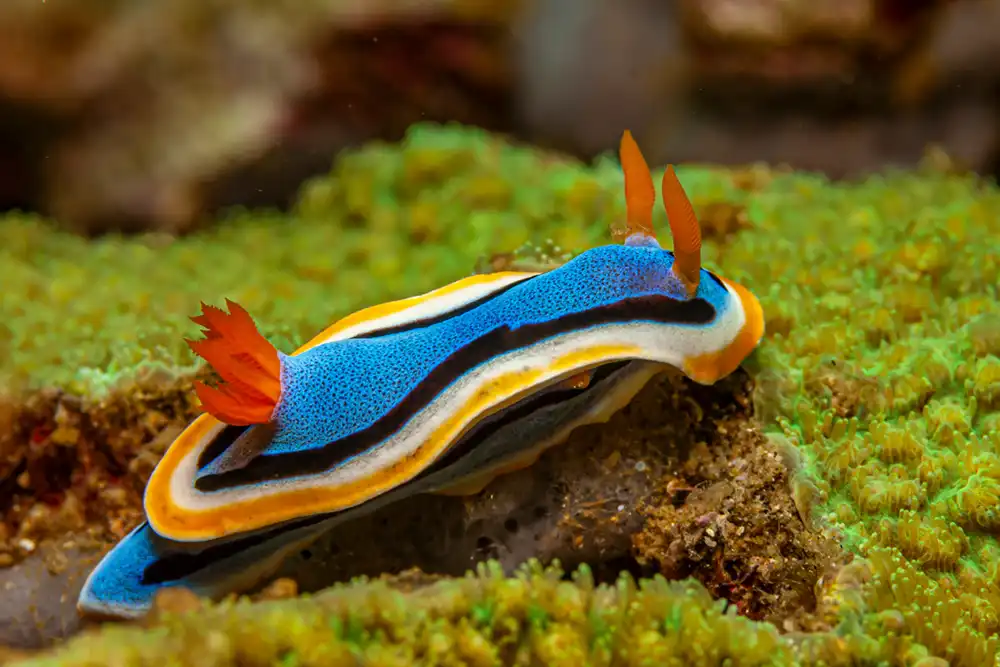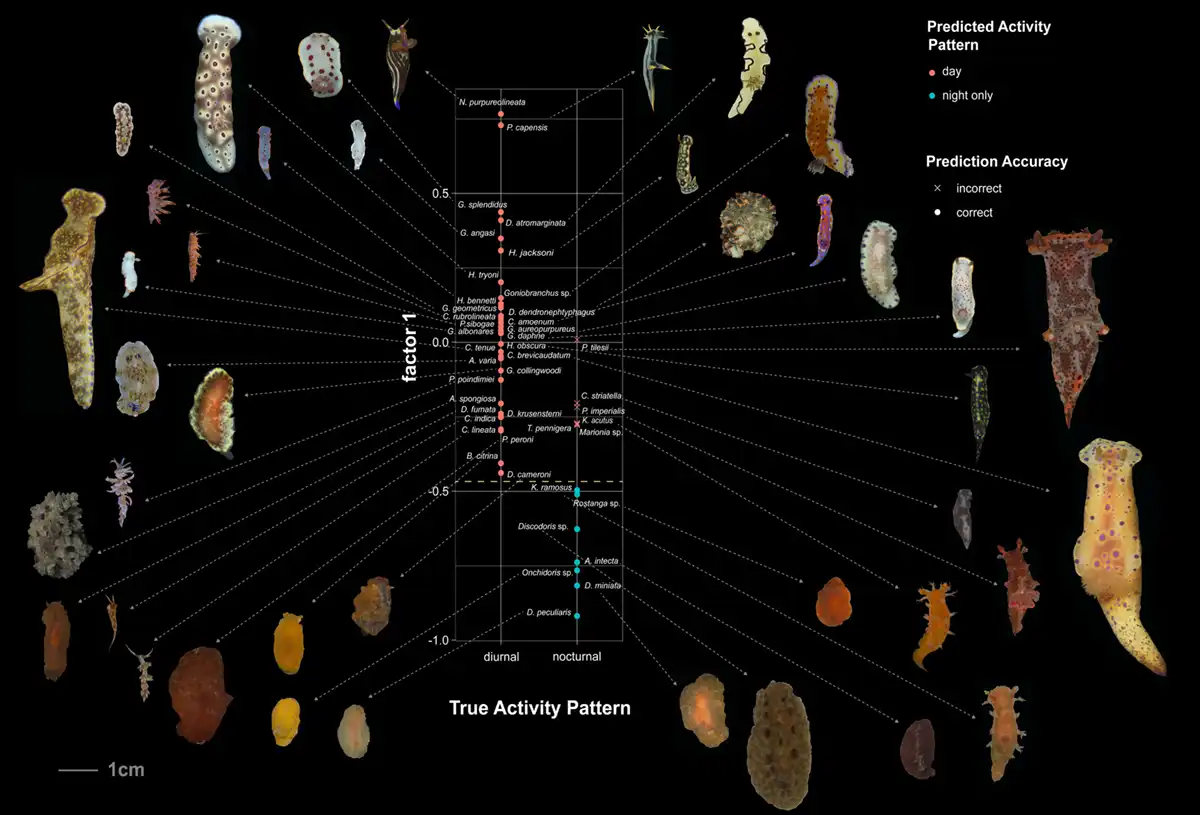
A new study by scientists from Australia’s University of Queensland has found that brightly-coloured nudibranchs and sea slugs are most active by day, when their colouration is most prominently displayed.
The use of colour and other characteristics such as loud sounds or foul odours to deter predators is known as aposematic signalling, a primary warning to predators against the secondary defences – such as venomous bites and stings or poisonous body parts – of the prey.
Aposematism is mutually beneficial to both predator and prey in that it prevents both parties from the unpleasant, or potentially lethal, effects of a predatory encounter. It is prevalent throughout the animal kingdom, mostly in insects, amphibians and smaller reptiles, and is widespread among, marine species.
Bright colours only work as a defence, however, if the colours are visible to the animal’s potential predators. It might therefore be assumed that bright colouration evolved to ward off animals that hunt visually during daylight hours, but there are plenty of brightly-coloured marine species that are only active at night, and little research into the relationship between the colouration of a prey animal and its daily routine.
The scientists behind the paper, led by Dr Cedric van den Berg of the University of Queensland’s School of the Environment, set about analysing the colour patterns of 45 different species of sea slugs found in waters off eastern Australia.
‘Sea slugs use bright, contrasting colour patterns to send messages to potential predators like “Don’t eat me, I’m poisonous”,’ said Dr van den Berg.
‘They advertise their underlying defences such as nasty chemicals or stinging cells with bold visual signals like brightly coloured spots, thick stripes and enhanced body outlines.
‘These tactics are strongly linked to being active during daytime when there’s enough light for these signals to function, but there is surprisingly little evidence to support that assumption.’
The team used statistical modelling techniques to identify a single factor – or ‘fingerprint’ – shared between the species that could be correlated with daytime behaviour, and used visual cues based on the modelled eyesight of a lagoon triggerfish (Rhinecanthus aculeatus).
They found that diurnal species – those that are most active by daylight – were more likely to be brightly coloured and boldly patterned than nocturnal species.
In total, 87 per cent of the species in the dataset behaved according to the correlation between colouration and daylight activity, which the scientists said showed daylight was critical to the sea slugs’ ability to ward off predators.

Most sea slugs and nudibranchs are not innately poisonous to predators, but acquire their toxicity from the food they eat, such as the stinging cells of hydroids and corals, or the unpleasant chemicals secreted as a defence mechanism by sponges.
‘It makes sense for these species to avoid the risky and potentially costly experience of being nibbled on or even ingested by a predator, whether they are toxic or not,’ said Dr van den Berg.
‘Their bold appearance also educates predators by being distinct from other animals while also increasing the chances of being remembered.’
Dr van den Verg explained the difference in colouration between diurnal and nocturnal sea slugs was down to the simple fact that predators that hunt at night are more likely to rely on other senses such as smell, or the electroreceptors used by sharks and rays.
‘Nocturnal sea slugs don’t need to evolve colours and patterns aimed at signalling to potential predators because predators are unlikely to use vision to hunt at night when senses like touch and smell are more important,’ said Dr van den Berg.
The scientists hope that their research will enhance the scientific understanding of how body colouration and patterns develop as a defence against predation.
‘The satisfying thing is the fingerprint captures colour pattern properties we believe are efficient visual signalling tactics, for example, to advertise nasty chemicals,’ said Dr van den Berg.
‘We can even use the fingerprint to successfully classify the daytime activity of almost 90 per cent of all the species we looked at.
‘We hope this work leads to further research on the ecology and evolution of defensive animal colouration, particularly for marine species.’
The study ‘Diel activity correlates with colour pattern morphology of heterobranch sea slugs’ by Cedric P van den Berg et al is published under an open access licence in the Journal of Animal Ecology.
The post Nudis like to show off their colours by daylight appeared first on DIVE Magazine.







